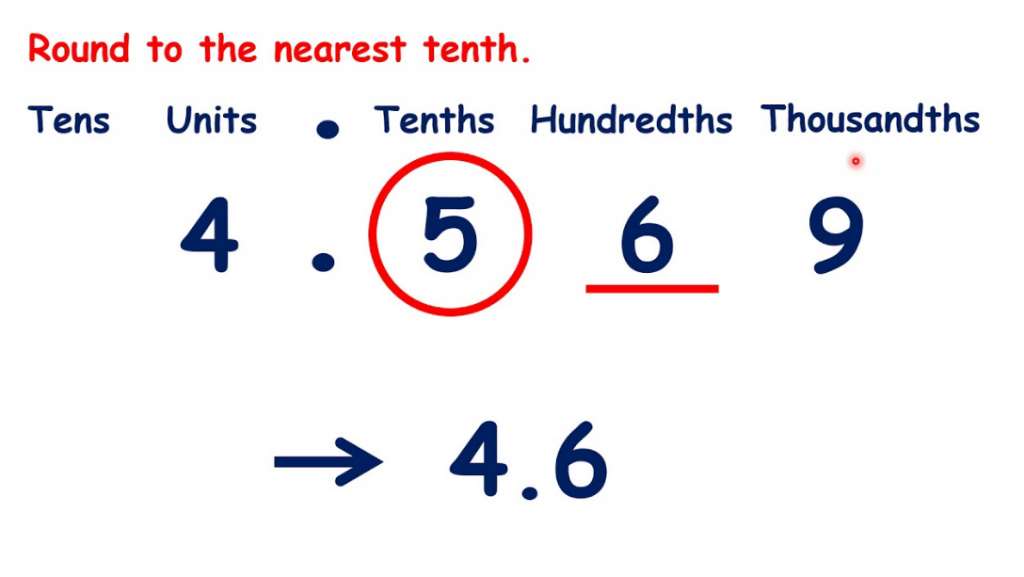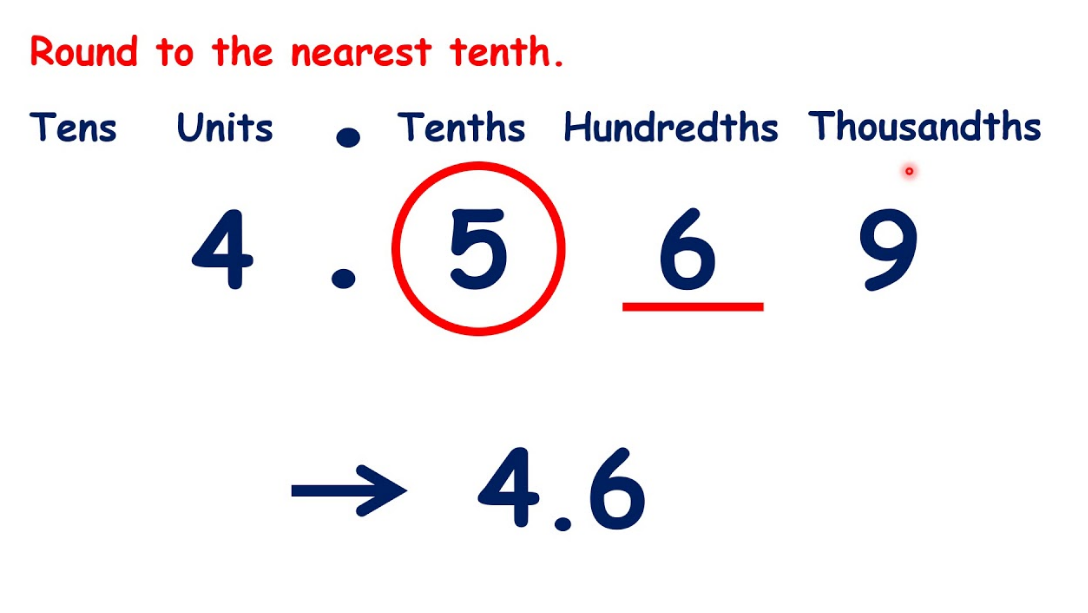Rounding Decimals: Utilizing a calculator often gives a long string of digits. For instance, 1 ÷ 3 might give .333333333. But very often, for practical goals, this level of accuracy is too precise to be useful. You try measuring .33333333 meters!
Decimal numbers can be rounded quite like whole numbers. For example, 0.33333333 is nearer to 0.3 than to 0.4, and rounding 0.33333333 m to 0.3 m makes it easy to measure. Here the number has been rounded so that it includes one decimal digit; it has been rounded to one decimal place. (We usually write ‘d.p.’ for ‘decimal place’.)
Often it is more practical to measure to the nearest centimeter (0.01 m), in which case 0.3333333 m rounds to 0.33 m. Here the number includes two decimal digits; it has been rounded to two decimal places.
The rule for rounding applies just as thoroughly to decimal places as hundreds.
The number of decimal points given, however, indicates the accuracy. So 0.30 means accuracy to the nearest 0.01 (two decimal places) whereas 0.3 indicates accuracy to the nearest 0.1 (one decimal place).
The common rule for rounding to a number of decimal places is to look at the digit one place to the right of the number of digits you want to round to, and round up or down depending on whether that digit is ‘5 or more’ or ‘4 or less.

Table of Contents
Rounding Decimals
Rounding is a method to estimate a particular number in a context. To round a number look at the following digit in the right place, if the digit is less than 5, round down and if the digit is 5 or more than 5, round up.
Rounding decimals
Rounding decimals belong to the rounding of decimal numbers to a certain degree of accuracy. We can round decimals to the most next wholes, tenths, or hundredths.
Rounding decimals are helpful to estimate an answer easily and quickly. It is also helpful to find out the estimate of the average score of the students in a class.
Rounding to the nearest whole
We follow the provided steps to round numbers to the nearest whole number:
Step 1- We look at the number we need to round.
Step 2- As we are rounding our number to the most next whole, we mark the digit in the one’s place.
Step 3- Now we see at the ‘tenths’ place (the digit to the right of the decimal point).
Step 4- (i) If the digit in the tenths column is 0, 1, 2, 3, or 4, we will round down the number at the one place to the most next whole number.
(ii) If the digit in the tenths column is 5, 6, 7, 8, or 9, we will round up the number at the one’s place to the most next whole number.
Step 5- Extract all the digits after the decimal point. The left out number is the wanted answer.
Rounding to the nearest tenths
We follow the provided steps to round numbers to the nearest tenths:
Step 1- We look at the number we need to round.
Step 2- As we are rounding our number to the most expected tenths, we mark the digit in the tenths place.
Step 3- Now we see at the ‘hundredths’ place (the digit to the right of the tenths column).
Step 4- (i) If the digit in the hundredths place is 0, 1, 2, 3 or 4, we will round down the number at the tenths place to the most touching tenths.
(ii) If the digit in the hundredths place is 5, 6, 7, 8 or 9, we will round up the number at the tenths position to the nearest tenths.
Step 5- Extract all the digits to the right of the tenths column. The left out number is the result.
Rounding to the nearest hundredths
We can follow the provided steps to round numbers to the nearest hundredths:
Step 1- We look at the number we need to round.
Step 2- As we are rounding our number to the most next hundredths, we mark the digit in the hundredths place.
Step 3- Now we see at the ‘thousandths’ place (the digit to the right of the hundredths column).
Step 4- (i) If the digit in the thousandths place is 0, 1, 2, 3 or 4, we will round down the hundredths place to the most next hundredths.
(ii) If the digit in the thousandths column is 5, 6, 7, 8 or 9, we will round up the hundredths place to the most next hundredths.
Step 5- Extract all the digits to the right of the hundredths place. The left out number is the answer.

